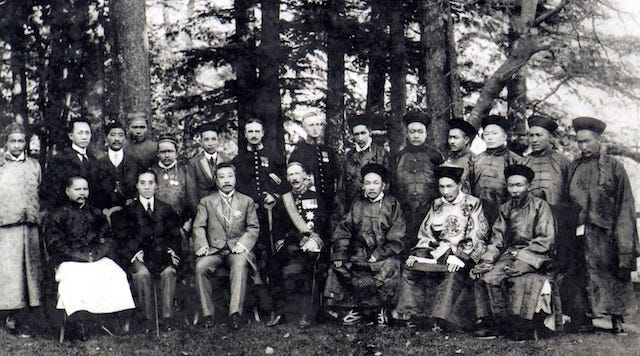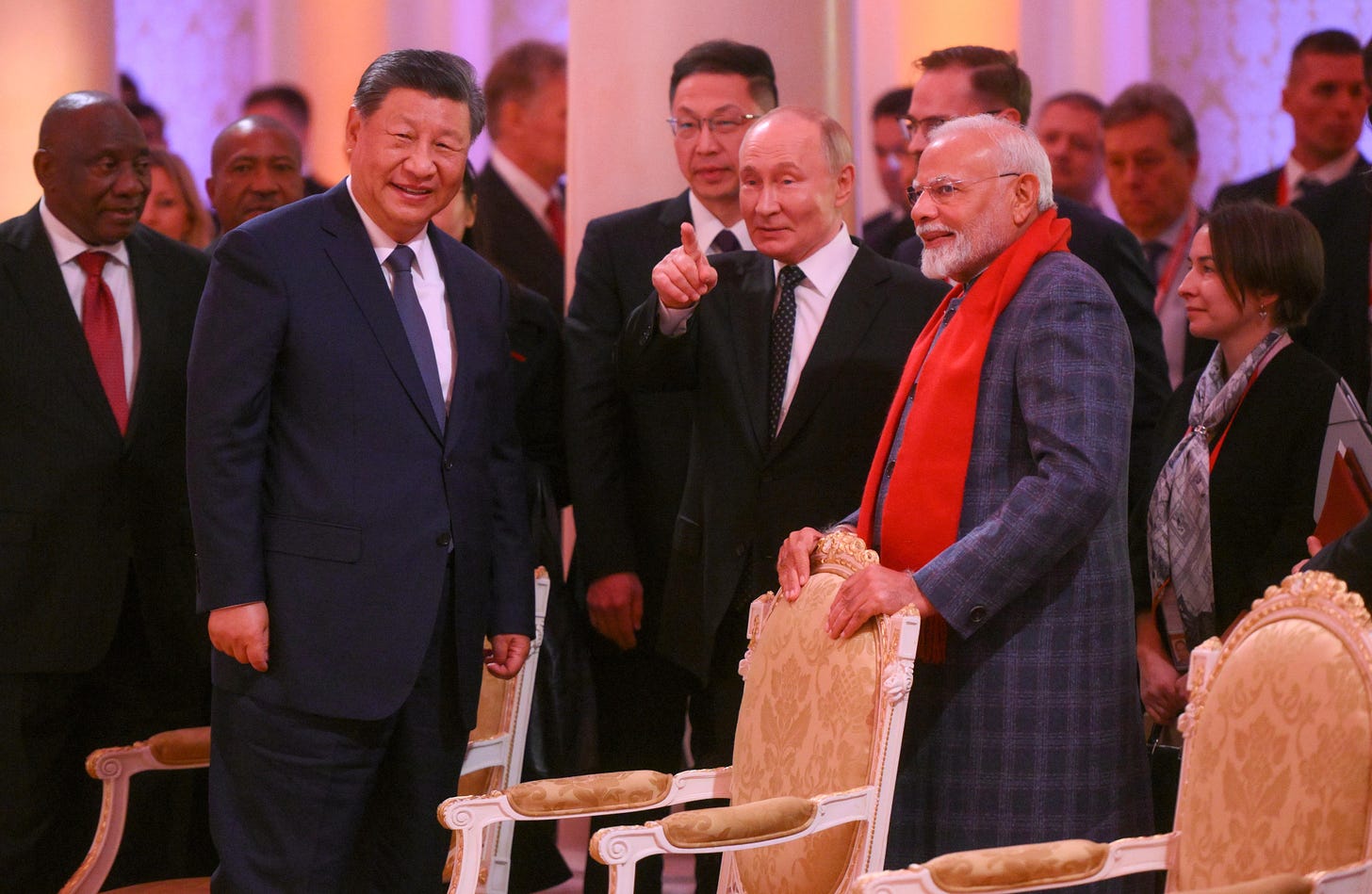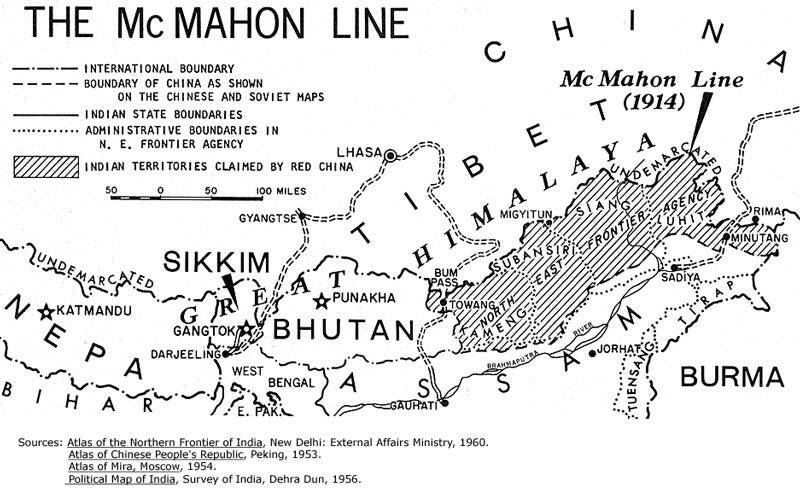China and India reaching a troop withdrawal agreement marks the bankruptcy of the US "Indo-Pacific Strategy"
China and India’s troop withdrawal signals a shift away from U.S.-led Indo-Pacific alliances, raising questions about Western influence and India’s evolving regional strategy.
According to the latest news, China and India have reached an agreement to withdraw their troops after more than a year of standoff on the disputed border. This agreement was reached at the BRICS Kazan Summit in October this year.
This is certainly exciting news because ever since China and India confronted each other on their disputed border in 2022, the outside world has been deeply concerned about the possible military conflict between China and India.
Why did India suddenly change its attitude towards China on the disputed border?
This has to start with the border dispute between India and China. The border issue between China and India has a long history.
This is mainly because there is a very complicated Himalayan mountain range between China and India. The mountain range runs across China's Tibet and India's Bhutan and other regions, stretching 2,400 kilometers. It is one of the highest mountain ranges in the world. Its main peak, Mount Everest, is the highest peak in the world, with a peak height of 8,848.48 meters.

The Himalayas have a complex terrain and are covered with ice and snow all year round. They are a natural barrier between the Qinghai-Tibet Plateau and the South Asian continent.
It is precisely because of the complex terrain and the topographical features of the Himalayas that stretch for thousands of miles that their strategic location is naturally crucial.
Obviously, whoever controls the Himalayas can look down from a high position and overlook the entire Indian plain, forming an overwhelming pressure on the Ganges Plain, which is vital to India.
The topography of India is characterized by "low in the north and high in the south". The northern part is dominated by the Ganges Plain, also known as the Great Central Plain, while the southern part is dominated by the Deccan Plateau.
The Ganges Plain in northern India was formed by the impact of the Indus River flowing downstream, forming fertile land. Because of this, the Ganges Plain became the birthplace of Indian civilization, and the Indus River became the "mother river" of India, giving birth to Indian civilization.
Therefore, many countries in Indian history basically originated near the Gangetic Plain, which is also a very important grain production base in India. Such an important Gangetic Plain is adjacent to the Himalayas. For India, ensuring the safety of the Gangetic Plain is naturally a top priority.
Because of this, whether it is a country in Indian history, the British Indian period, or modern India, the Indian authorities are very concerned about who controls the Himalayas and the Qinghai-Tibet region to the north.
In addition, the Sino-Indian border issue was also deeply influenced by British colonial forces, one of which was the so-called "McMahon Line". The "McMahon Line" can be considered the direct cause and fuse of the Sino-Indian border issue. China and India's different understandings of the "McMahon Line" have led to today's Sino-Indian border issue.
The "McMahon Line" is a dividing line drawn by British explorers to measure the boundary between India and Tibet, China. It was named after Henry McMahon, a British diplomat at the time, because the latter held the Simla Conference in 1914, which aimed to clarify the border demarcation between Tibet and mainland China, and between Tibet and British India.
In 1720, the Qing army expelled the Dzungar army that occupied Tibet then and controlled the entire Tibet. This was also the beginning of the Chinese government's direct control over the Tibetan region. Before that, the Tibetan region and the Central Plains dynasty belonged to a tributary system. The Tibetan region was not directly controlled by the Central Plains dynasty and was only briefly ruled during the Yuan Dynasty and the Mongol Empire.
From 1720, when the Qing army took control of Tibet, to 1911, when the Xinhai Revolution broke out, the Qing Empire was always under direct control of the Tibetan region. In 1911, the Wuchang Uprising led to the collapse of the Qing Empire, the Qing army stationed in Tibet mutinied, and the Tibetan region took the opportunity to break away from the control of the Chinese government.
Although the Beiyang government was established in 1912, it could not control the overall situation. Warlords were everywhere in China, and it was in a de facto state of division. Therefore, in 1914, the Simla Conference was held under the auspices of Britain.

Although the conference was nominally to confirm the border issues between Tibet and mainland China and between Tibet and British India, in fact, Britain wanted to use it to achieve a diplomatic conspiracy to legally separate Tibet from China.
Figuratively speaking, the British plot was to construct a "buffer zone" between mainland China and British India in order to ensure the "security" of British India, that is, the security of the Indo-Gangetic Plain.
It is also for this reason that, under the order of the Beiyang Government, the Chinese representative Chen Yifan refused to sign the official text of the Simla Conference. Although the Chinese government at that time did not have the power to control Tibet, since the Chinese government did not sign the resolution formed at the Simla Conference, the "McMahon Line" produced by the Simla Conference naturally had no legally binding force on the Chinese government.
Another reason why the British concocted the "McMahon Line" was to place the then-important commercial center of southern Tibet, Tawang County, under the control of British India. This is also an important reason why the "McMahon Line" was not drawn on the watershed of the Himalayas.
Obviously, the "McMahon Line" drawn by the British has planted a time bomb for future Sino-Indian relations, and the different understandings of the "McMahon Line" between China and India have led to today's border dispute.
India gained independence from Britain in 1947, and the Indian authorities accepted Britain's "McMahon Line" as it was. In 1950, as the Chinese army entered Tibet and took control of the entire territory of Tibet, the dispute between China and India over the "McMahon Line" gradually heated up, and Sino-Indian relations deteriorated, eventually leading to the Sino-Indian border war in 1962.
In the 1962 Sino-Indian War, although India was defeated, China also unilaterally withdrew its troops, mainly due to the extreme pressure from the two superpowers, the United States and the Soviet Union, and the difficulty of logistical supply. Therefore, although China won the Sino-Indian War, India also took the opportunity to completely control the southern Tibet region and established the so-called "Arunachal Pradesh" for actual management.
In 2014, Narendra Modi, the leader of the Bharatiya Janata Party, won the election and became the Prime Minister of India. Modi is an ardent Indian nationalist. It was under Modi's nationalist policies that the border dispute between India and China began to heat up.
Prior to this, in 2012, then-US President Obama proposed the "re-engagement in Asia" strategy, which opened the era of competition between the United States and China. Later, in 2017, US President Trump formally proposed the so-called "Indo-Pacific strategy" in an attempt to win over India to confront China. Therefore, driven by these two major factors, the border issue between China and India began to gradually heat up, and eventually led to a serious border conflict in 2022.
The 2022 Sino-Indian border conflict is the most dangerous moment for China and India since the 1962 Sino-Indian border war, and the war between the two sides seems to be on the verge of breaking out again.
However, after just two years, India seems to have changed its aggressive border policy and started to ease relations with China.
The reason is that although India plays an important role in the US's "Indo-Pacific Strategy", India itself has not gained many benefits.
The main reason why India cooperates with the US "Indo-Pacific Strategy" is that it hopes to obtain strong support and industrial investment from the United States, especially US investment in India's manufacturing industry, which is what India dreams of. Because the United States controls the forefront of the world's high-end chips and high-end military equipment, India is very interested in obtaining investment in American chips.
At the same time, India also hopes to become an important part of the US "friendly shore outsourcing" policy support. This is the most important reason why India is willing to offend China and cooperate with the US "Indo-Pacific Strategy".
If India wants to develop its manufacturing industry, it must either connect to the Chinese supply chain or to the Western supply chain, because China’s current supply chain is strong because it is connected to the Western supply chain.
Having offended China, India naturally cannot choose to access the Chinese supply chain, so it can only choose to access the Western supply chain. However, the West's purpose of wooing India is only to confront and contain China. They absolutely do not want to shape India into a "second China", so India will inevitably be coldly treated by the United States.
This can also be seen from the numbers. India's various unfriendly actions towards China do not seem to have led to a strong development of India's manufacturing industry. Instead, India's manufacturing industry has dropped from 2010‘s 17% to 2022’s 13%. This is quite unfavorable for Modi himself to vigorously support India's manufacturing industry.
At the same time, not only did the United States fail to expand its investment in India, but it has been continuously withdrawing its investment from India, causing the Indian stock market to face pressure to plummet, which further made India suspicious of the United States and the West.
The United States and Western countries have strongly criticized and accused India of allegedly carrying out assassination operations against separatist forces within their territories. These incidents have made India begin to doubt whether the United States and the West are India's true partners. This is also the fundamental reason why India has eased relations with China on the border issue.
The various events that have taken place in recent years have finally made India realize that the United States and the West are not the "reliable partners" as they claim. On the contrary, for their own selfish interests, the United States and the West are not hesitant to wield the sickle against their "allies", from Ukraine, Japan to South Korea, and finally to India itself.
China has never viewed the rise of other countries as a threat or challenge but has always viewed the rise of other countries as an opportunity. So, between the United States and the West and China, it is natural that India will choose China.
India's easing of tensions on the Sino-Indian border issue also marks the complete bankruptcy of the US and Western "Indo-Pacific Strategy". The US and the West can no longer win over India to confront and contain China. Although India is unlikely to strongly support China, it will at least remain neutral, which is beneficial to China, India, and Sino-Indian relations.











‘To be an enemy of America can be dangerous, but to be a friend is fatal.’ — Henry Kissinger
‘It is so easy to be an enemy of the United States, but so difficult to be a friend.’ — Nguyễn Văn Thiệu